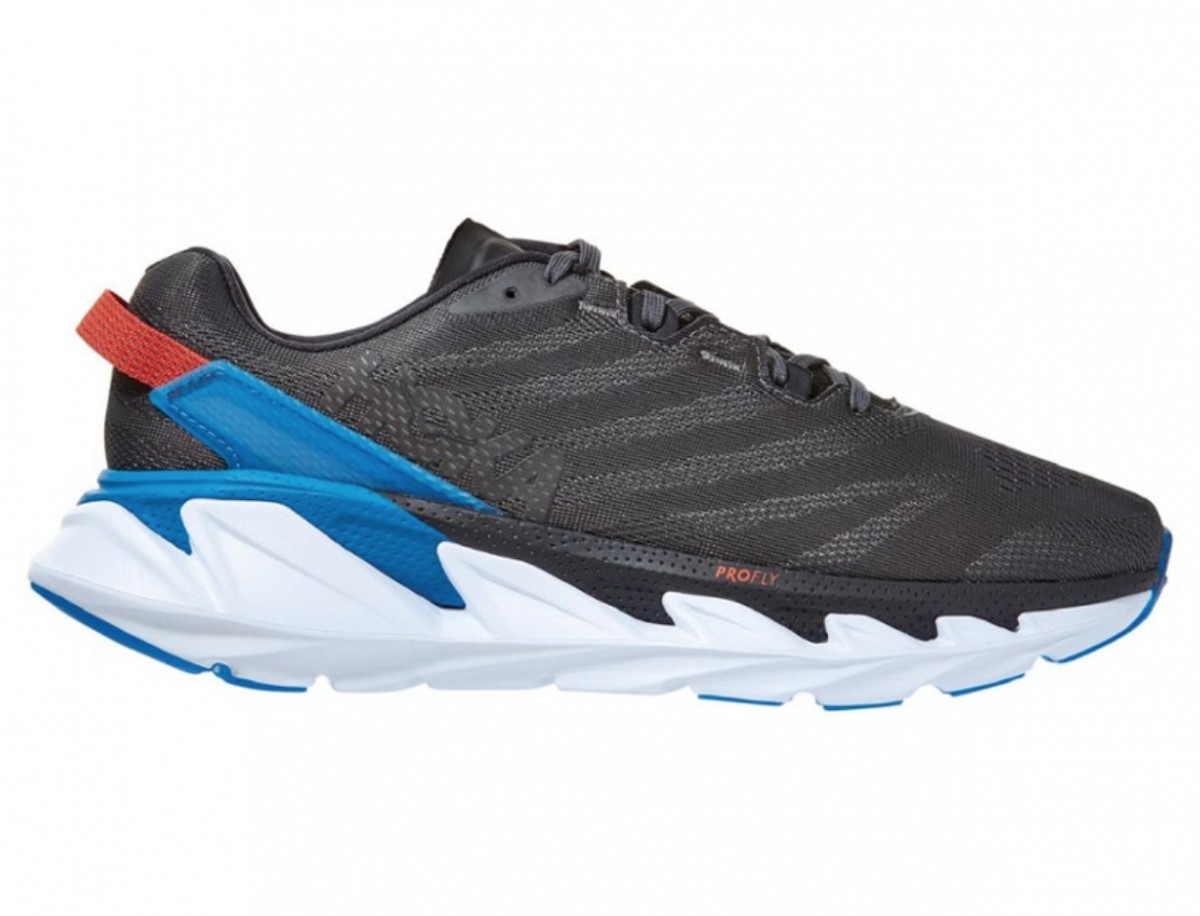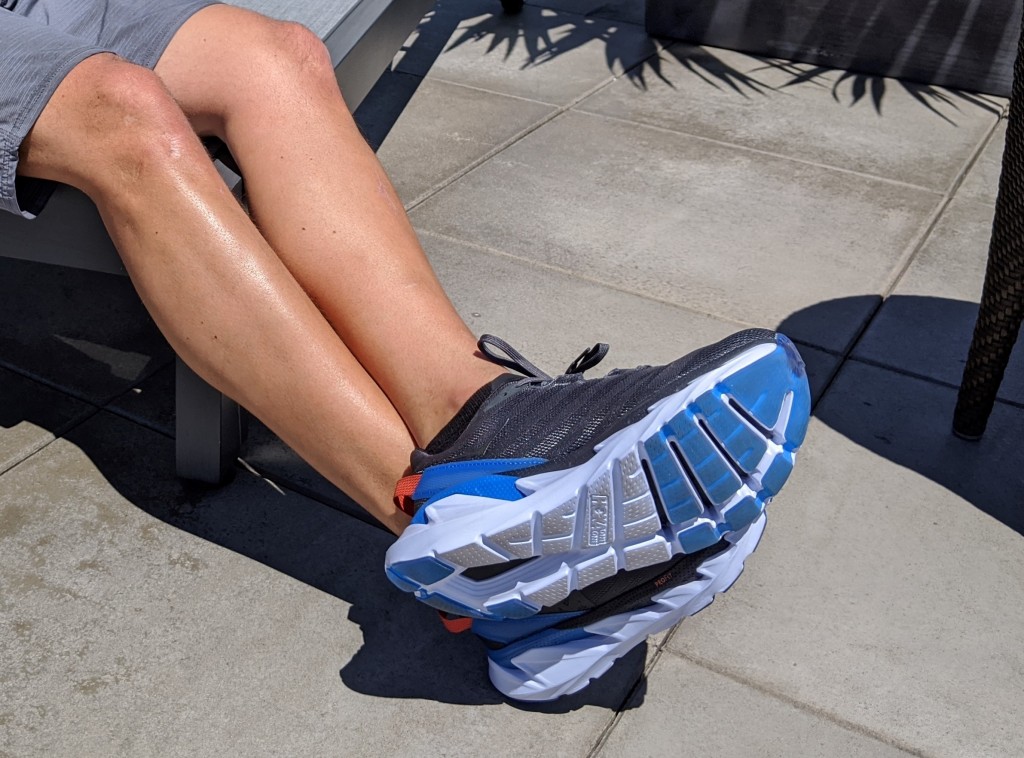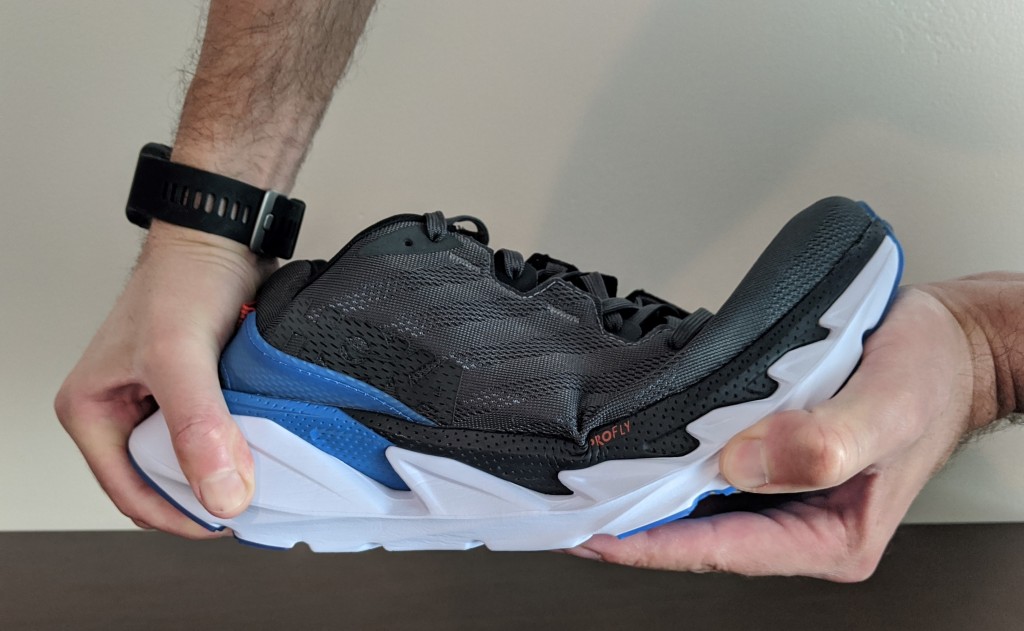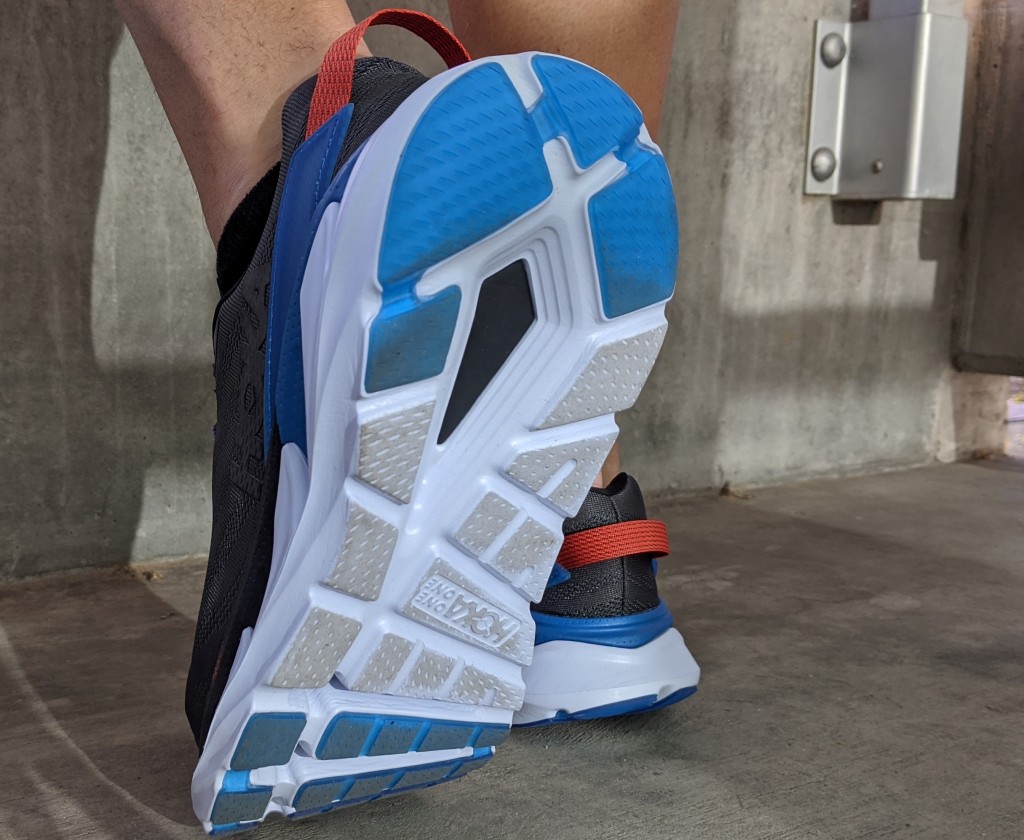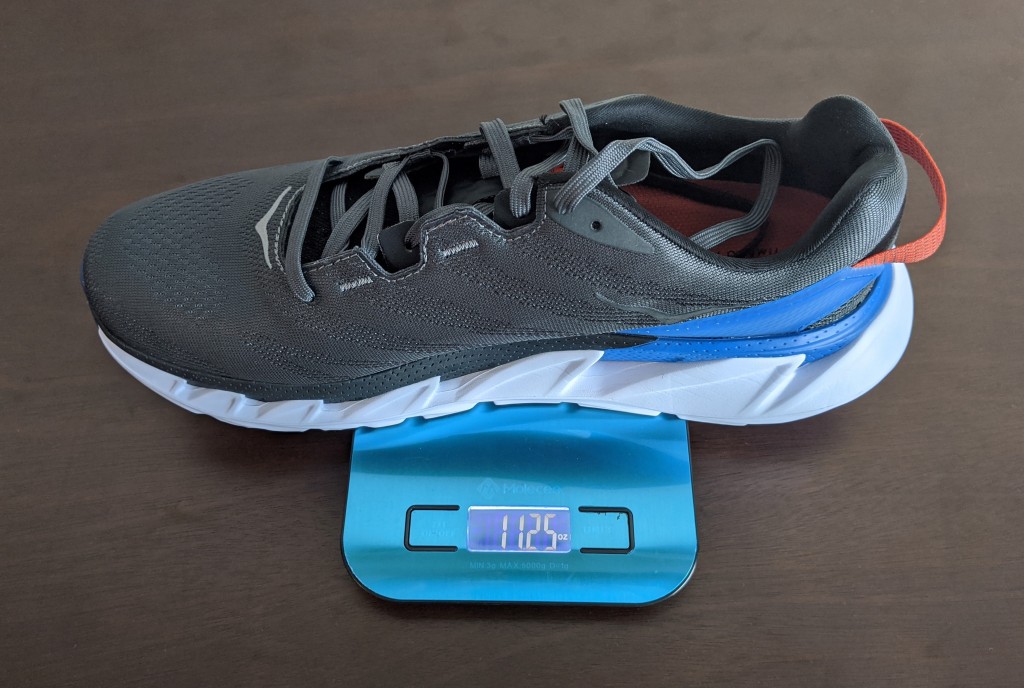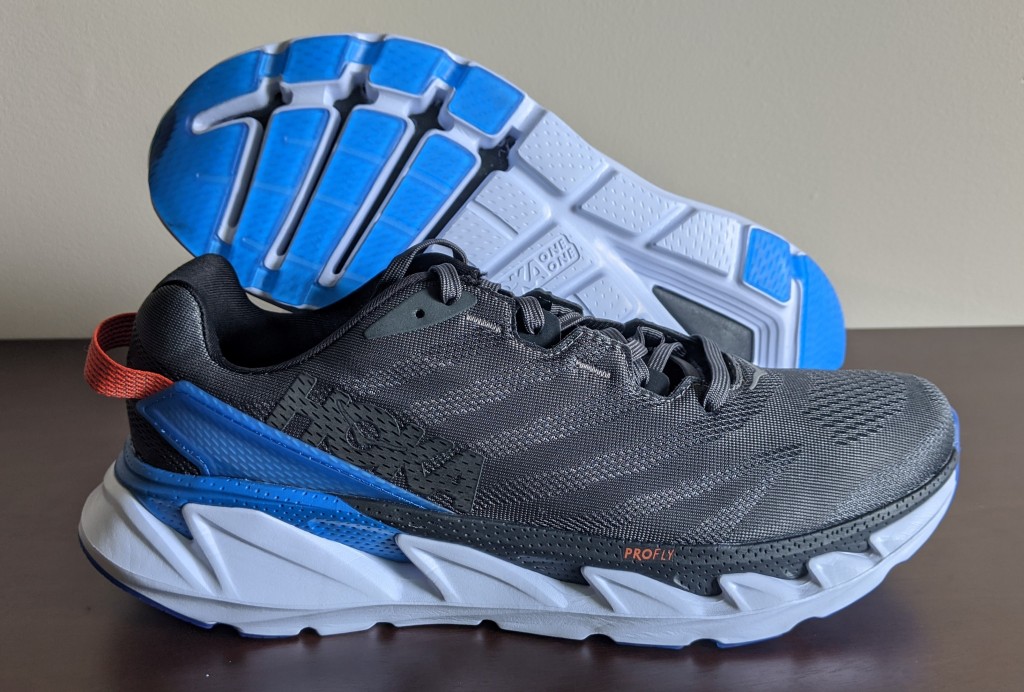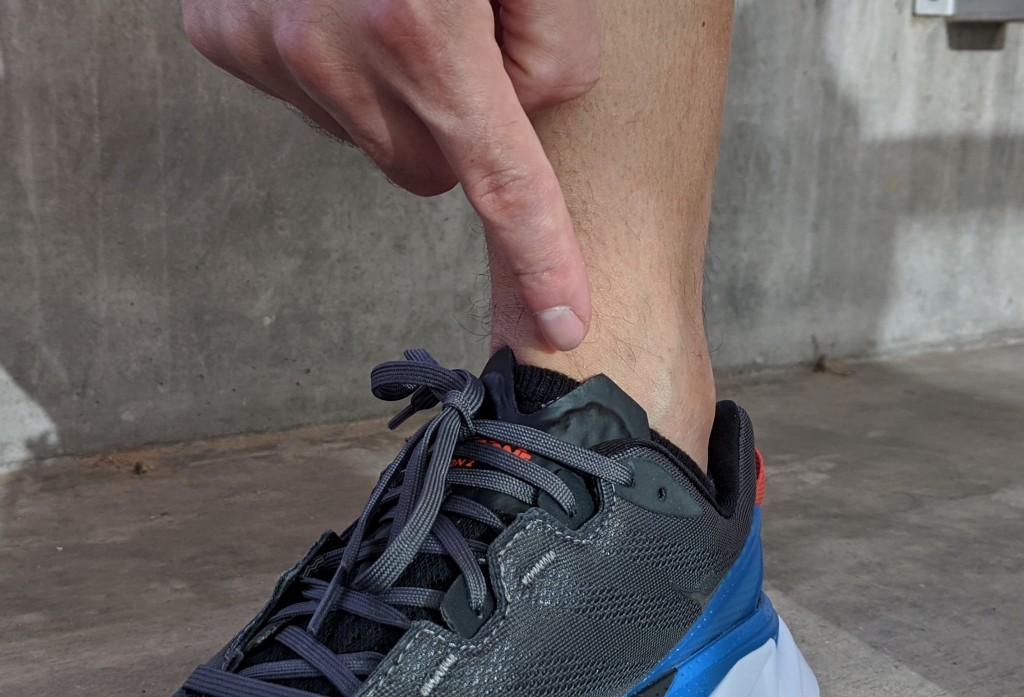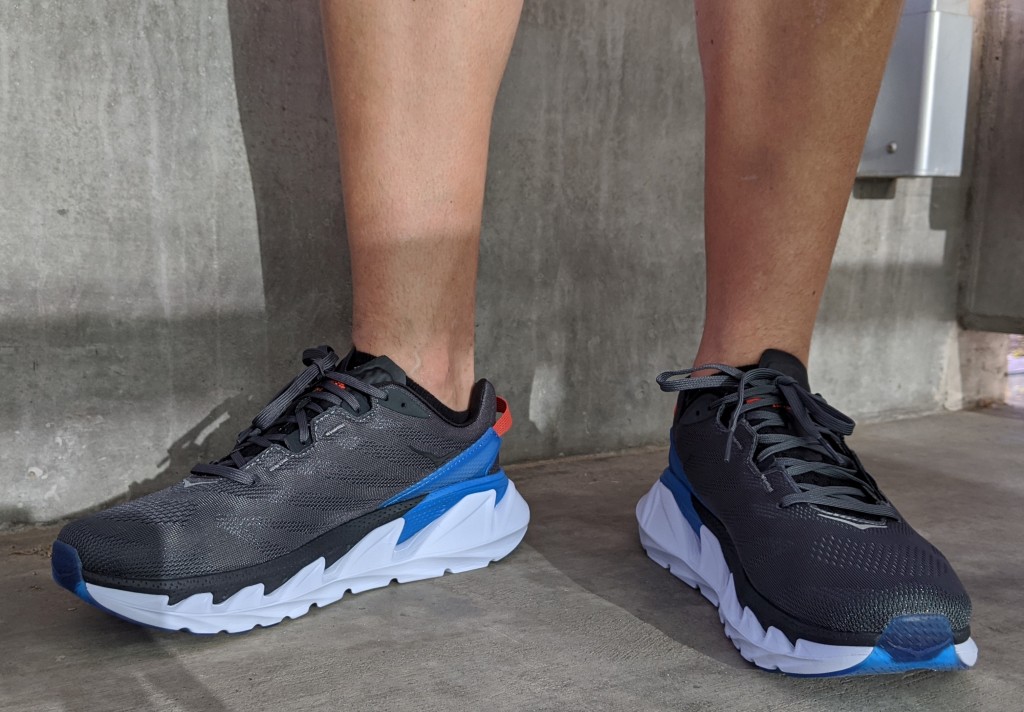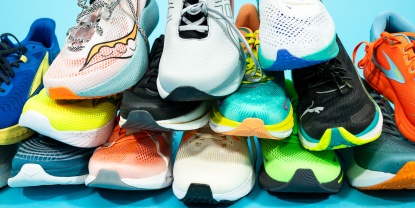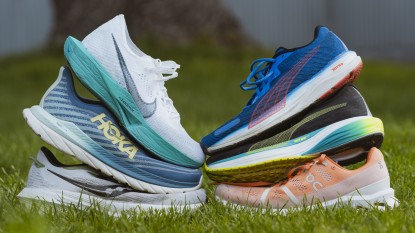Hoka Elevon 2 Review
Our Verdict
Our Analysis and Test Results
A few things immediately stick out when you look at the Hoka Elevon 2. Obviously, the giant Hoka stack hits you in the face. But then you look a little closer and see that you have multiple layers of cushioning that make up the midsole. Pick it up, and it's surprisingly light. Slip it on and jog around the block and you feel some plushness underfoot, but kick it into gear, and you feel it pop. We'll spend the rest of this review going into what makes the shoe pop and why we think it's worth keeping in your lineup.
Performance Comparison
Responsiveness
To get its sweet balance of response and cushion, the Elevon 2 uses a denser PROFLY EVA foam midsole set into a thicker outer layer of EVA foam. The stack at the heel is also 5mm thicker than at the forefoot. Landing at the heel is going to be a plush experience. You'll then rock along to the toe, where the midsole is a good deal more firm, and the energy kicks back out. If you land more along your midfoot, you'll find the shoe to be much more responsive overall. Of course, it's also easier to be a midfoot or forefoot lander in the Elevon 2, because there's pretty minor heel-to-toe drop (as we said, 5mm), so the shoe doesn't force you into a heel-strike, but the cushion is there if you do.
The upper also does some work to keep the shoe adhering to your foot. The heel is well-shaped to catch the back of your heel and limit slippage without interfering with your stride. There are also support wings to improve the fit of the upper. It's not just a matter of comfort, though. The improved fit keeps steps clean, so you're not losing energy and effort with a big, dumb floppy shoe. The Elevon 2 is pretty solid in this measure. It has some plush to its sole, but you're not going to be running in mud or feel like you're on a tiny StairMaster mashing marshmallows.
Landing Comfort
As we mentioned in the previous section, the Elevon 2 has a nice cushy midsole that can take a pounding, yet it retains some bounce, primarily in the midfoot and forefoot. It accomplishes this with a dense PROFLY EVA midsole layer and another layer of EVA foam beneath that. This is the reason we say it's good for short trots where you'll be landing closer to your heel or faster sessions where you'll be in a more aggressive forward position, landing farther up your foot and wanting the energy return of the pert upper segments that you don't get from the cushy heel.
Inside, the Active Foot Frame seems to allow the foot to mold into the shoe quite nicely. Your foot works with the shoe better. No matter the distance you're running, it keeps your foot bound to the rest of the shoe like a sock, minimizing friction and hotspots. It's a solid design.
Perhaps the only slight annoyance we found is in the outside rear of the sole. The hard outsole is slightly thicker just before the beveled heel tapers off, and it juts out just a bit. The idea is to help stabilize you as you run. If you're heel-planting, you land on the outsole's extended heel and roll up through to the forefoot and toe-off into the next stride. During that transition from hindfoot to mid and fore, that outside section of outsole feels like it forces you to supinate to counteract the faux-post. Oddly, the Active Foot Frame is meant to sculpt the footbed to your foot to avoid embedding stability structures like posts into the midsole, yet that section of the heel seems to function exactly like a stability post.
Weight
The Elevon 2 weighs in at 22.5 ounces in a pair of men's 11. Not bad for one of the largest models in the lineup. Their use of EVA foam and lean upper construction allows them to maintain such a bulky shape without weighing you down much.
Durability
There are really very few areas of concern with these shoes. Their upper is covered by a fairly standard mesh with average durability. The support wings running along each side of the midfoot provide some protection against wear, which is nice. The heel, collar, and tongue all have lean padding, so compaction isn't a serious concern there.
The outsole uses an interesting transparent crystal rubber. It appears to have the same durability as standard blown rubber. The placement is a bit sparse, though, leaving most of the midfoot as exposed EVA. Runners who run less toward the heel could see more wear. It's also worth pointing out that the sole's grooves allow sticks, stones, and debris to become lodged in them. Not only is that annoying as hell, but you might even puncture the sole if you get a sharp stick stuck up into one of the holes. It's remote, but not impossible.
Upper Comfort
Upper comfort really makes or breaks a shoe. A fast, light, lean shoe might help us set records, but no one wants to spend all their time wearing hurty PITA shoes. The Elevon 2 is so bloody close to getting it perfect here, but they have one flaw: the tongue. It's a design that floats around the high-performance shoes every year, and we can't figure out why designers continue to bring it out. The tongue is nice and thin — it even has a notch cut into it to help it splay and fit against the ankle. However, the end of the thin tongue is still rigid and rubs. On shorter runs, it's merely annoying. On longer runs, it chafes. Especially if you start getting the salt crystals and sand rubbing in there. We hope Hoka and the rest of the shoe companies will stop using the design with rigid edges. Baffling.
Otherwise, the upper is great! The internal support wings help secure the foot into the shoe, even allowing you to jockey the lacing around, varying tightness across different sections of the midfoot. The Active Foot Frame makes a snug little cubby for your foot, improving both control and feel. Your foot and the shoe move as a single unit. That might sound contrived, but really. Typically when you move your foot in a shoe, you feel the pressure at the top of your ankle, or you feel your heel slip, or maybe you might even have the laces locked-down somewhere near the forefoot. The Elevon 2 does a better job of molding against the foot and distributing the lock across the entire shoe so that you get even movement.
The last redeeming factor for this shoe under the Upper Comfort heading is in the cushioning. It's not overly padded. A lot of the big stability shoes will flood you with padding and cushion. That can be really nice — and it always feels great when standing there or walking around the shoe shop. But there's a lot to be said for the lean padding. For one, it's much cooler. For another, it can start to feel like grappling with soggy pillows on longer runs. These shoes balance the need for padding and the eventual discomfort too much padding can cause. The result is a natural-feeling, secure fit that won't leave you chafed.
Oh, and be sure to wear an ankle sock to avoid the tongue issue.
Breathability
This is one of the more breathable shoes out there. Most of the upper is made up of quite thin mesh. There's also very little padding to insulate or hold moisture. Even the tongue is very thin, and it has ventilation throughout. The only limiting spots are the heel where the impermeable counter lives and the two support wings that run along the sides and top of the foot under the laces. The wings are only about three fingers wide, but they're made of some sort of thin impermeable felt or some other synthetic textile. Out on the road, you're really not going to notice. The vents over the toes and along the sides of the foot do about as good a job as any. You'd need to be in a really hot, muggy place to have to think about changing to breezier shoes than these.
Value
Don't' get us wrong, we really enjoy the Elevon 2. They're a nice update to the original model, and they'll make a lot of runners happy, but they need to work on that asking price. If you can get them at a decent discount, go ahead and jump on them.
Conclusion
The Elevon 2 doesn't pick up any awards this time around, but that doesn't mean they're not great running shoes. They have a good deal of versatility, and they're comfortable enough to sit in for miles and miles, particularly if you're wearing longer socks to protect against the tongue-rub. Runners looking for a lot of relief from bipedal percussion without sacrificing too much speed will get a lot out of this shoe.


